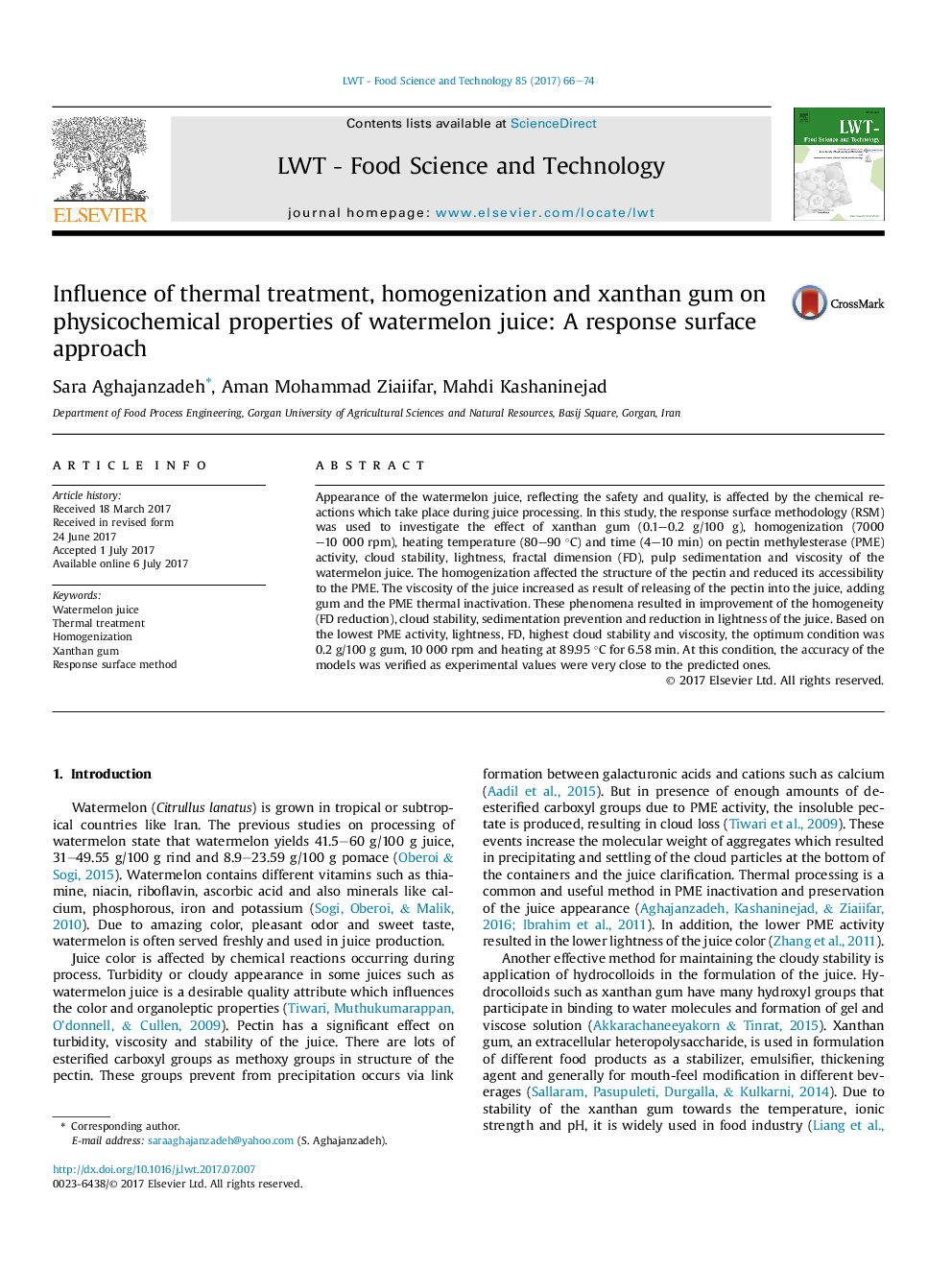| Article ID | Journal | Published Year | Pages | File Type |
|---|---|---|---|---|
| 5768433 | LWT - Food Science and Technology | 2017 | 9 Pages |
â¢Adding gum and PME inactivation increased the viscosity and reduced sedimentation.â¢Homogenization and PME inactivation resulted in FD reduction or improvement in homogeneity.â¢Formulation and processing conditions improved the cloud stability and color of the juice.â¢The optimum conditions of watermelon juice treatment were determined using RSM.
Appearance of the watermelon juice, reflecting the safety and quality, is affected by the chemical reactions which take place during juice processing. In this study, the response surface methodology (RSM) was used to investigate the effect of xanthan gum (0.1-0.2 g/100 g), homogenization (7000-10 000 rpm), heating temperature (80-90 °C) and time (4-10 min) on pectin methylesterase (PME) activity, cloud stability, lightness, fractal dimension (FD), pulp sedimentation and viscosity of the watermelon juice. The homogenization affected the structure of the pectin and reduced its accessibility to the PME. The viscosity of the juice increased as result of releasing of the pectin into the juice, adding gum and the PME thermal inactivation. These phenomena resulted in improvement of the homogeneity (FD reduction), cloud stability, sedimentation prevention and reduction in lightness of the juice. Based on the lowest PME activity, lightness, FD, highest cloud stability and viscosity, the optimum condition was 0.2 g/100 g gum, 10 000 rpm and heating at 89.95 °C for 6.58 min. At this condition, the accuracy of the models was verified as experimental values were very close to the predicted ones.
